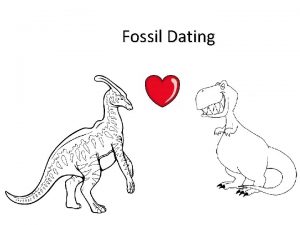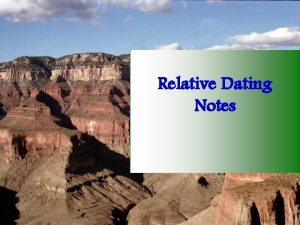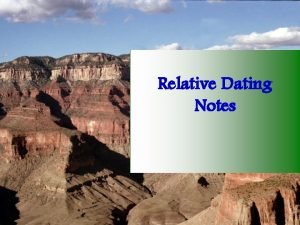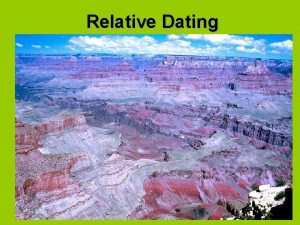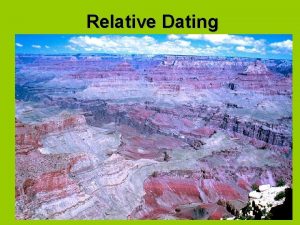Relative age dating 1 Relative Dating Once they






- Slides: 6

Relative age dating 1

Relative Dating Once they can know the order, a relative age can be determined for each rock layer. *Relative age indicates that one layer is older or younger than another layer, but does not indicate the rock’s age in years (absolute age).

Law of Superposition Scientists use a basic principle called the Law of Superposition to determine the relative age of a layer of sedimentary rock. *The Law of Superposition: Layers deposited first on the bottom are older than the layers above them

Crosscutting Relationships When rock layers have been disturbed by faults (a break or crack in Earth’s crust) In such cases, scientists may apply the Law of Crosscutting Relationships. *The Law of Crosscutting Relationships is that a fault or intrusion is always younger than all the rocks it cuts through above and below the unconformity.

Relative Age Based on what you now know can you place the layers indicated in the diagram in the correct order, starting from the oldest layer? The oldest layer is Q, followed by O, then N, then M, then L. P cuts across layers L-Q, so it is the next layer since it does not cut into layer H. Above the unconformity we then have layer H, followed by I, then J, with K being the youngest layer.

*Index Fossils Paleontologists can use fossils to determine the relative ages of the rock layers in which the fossils are located. Fossils that occur only in rock layers of a particular geologic age are called index fossils. To be an index fossil, a fossil must meet certain requirements: 1. It must be present in rocks scattered over a large region. 2. It must have features that clearly distinguish it from other fossils. 3. Organisms from which the fossil formed must have lived during a short span of geologic time. 4. The fossil must occur in fairly large numbers within the rock layers.





